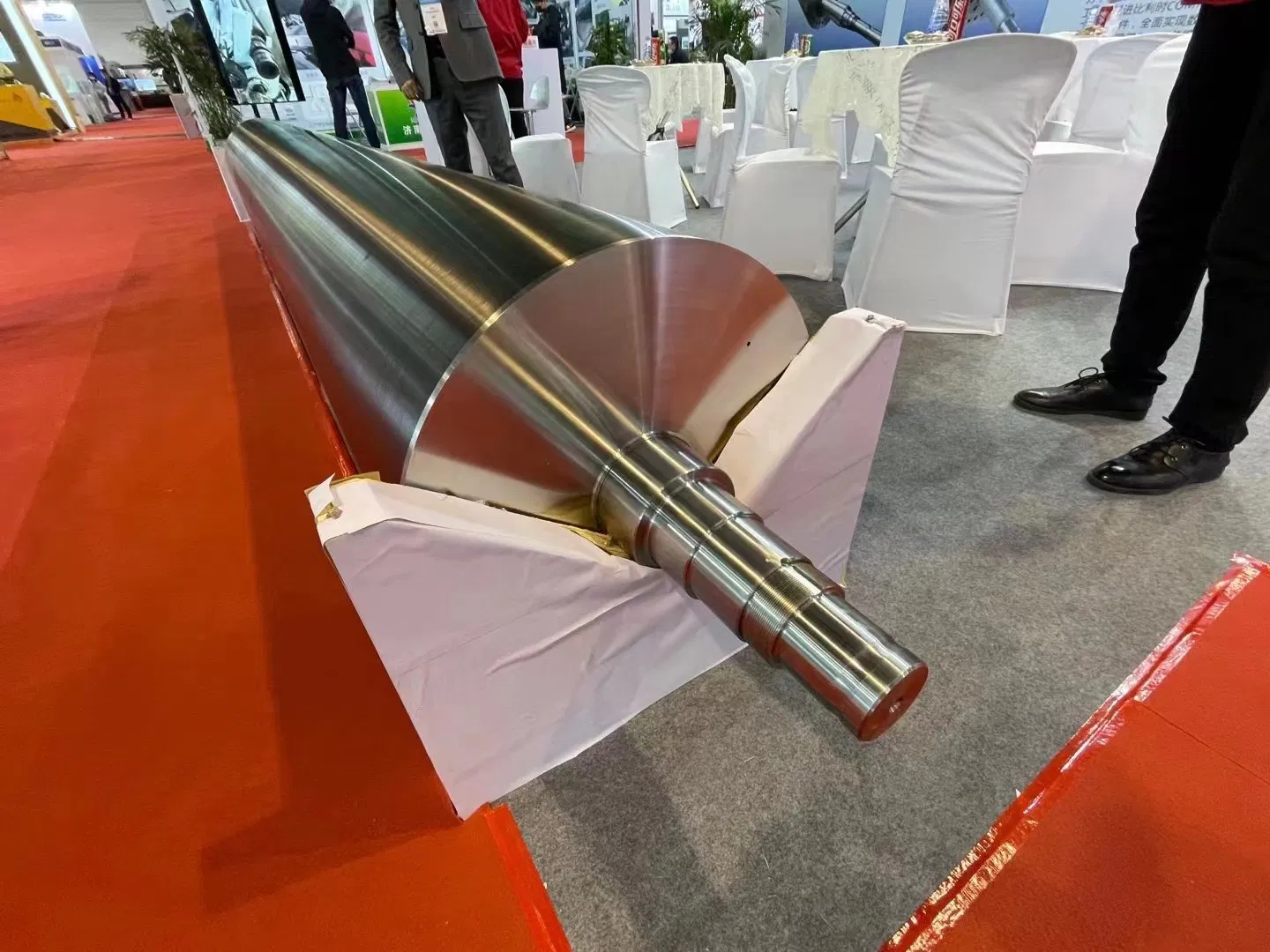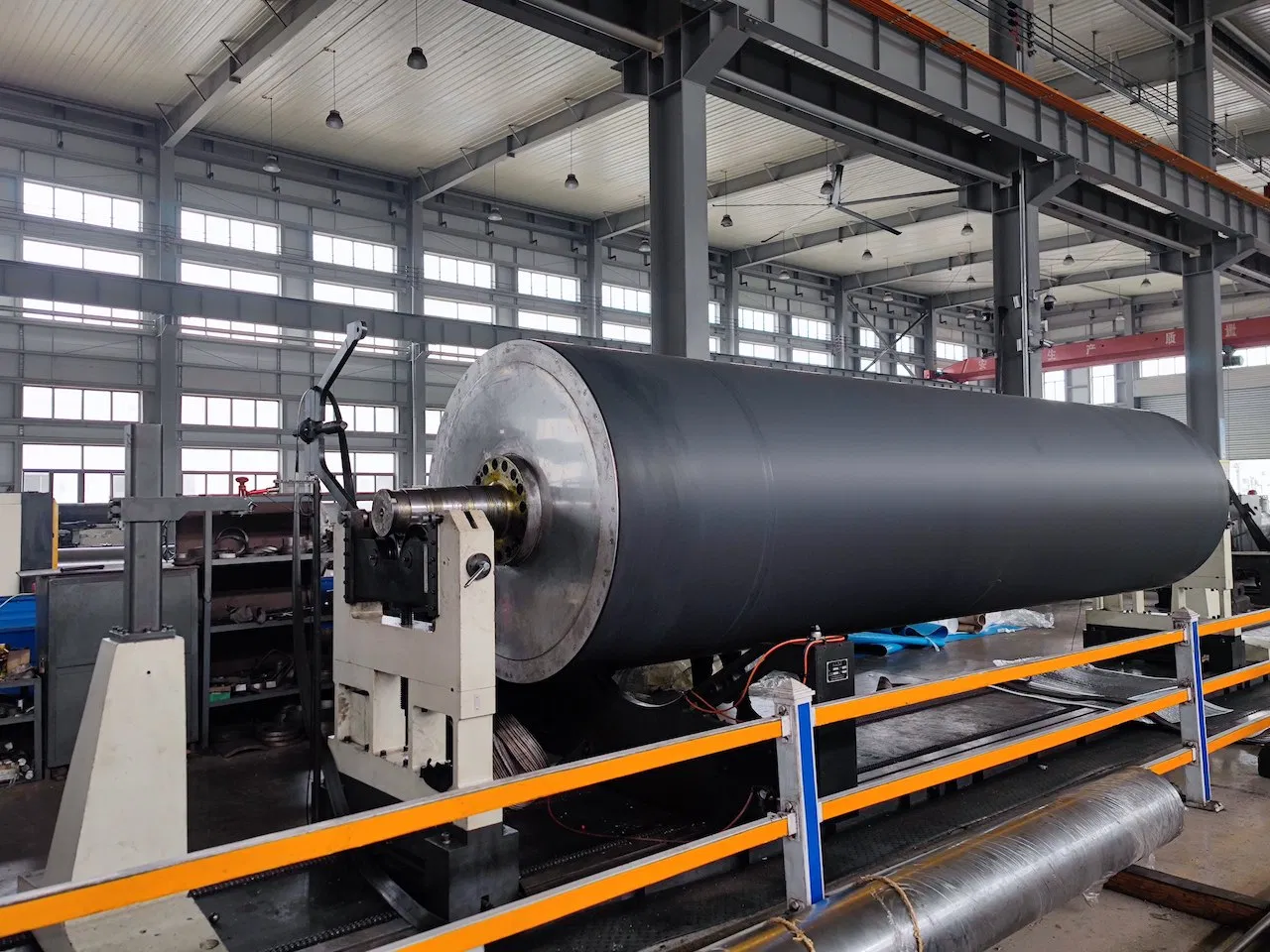In the intricate world of paper manufacturing, efficiency is paramount. Every component, no matter how seemingly small, plays a crucial role in the final product's quality and the overall operational cost. Among these vital components, the blind hole press roll stands out as a true workhorse. Often referred to as a blind drilled press roll, this specialized roll is indispensable in the dewatering section of a paper machine. For anyone involved in the pulp and paper industry, understanding the nuances of these rolls, from their design to the importance of choosing a reputable blind hole roll manufacturer or blind drilled roll supplier, is absolutely critical.
Frankly speaking, the press section of a paper machine is where the magic of water removal truly happens, transforming a wet web of fibers into a nascent sheet of paper. The performance of the press rolls directly impacts the dryness of the paper entering the dryer section, which in turn significantly affects energy consumption and production speed. Have you ever wondered what makes these rolls so effective at squeezing out moisture without damaging the delicate paper web? It’s the ingenious design of the blind holes.
The Ingenious Design: What is a Blind Hole Press Roll?
At its core, a blind hole press roll is a large, cylindrical roll, typically made of high-quality steel or cast iron, often coated with rubber or other specialized materials. What sets it apart are the thousands of small, precisely drilled holes on its surface. These holes are "blind" because they do not penetrate all the way through the roll's shell; instead, they end within the roll's body. This design is fundamental to their function in the dewatering process.
When the wet paper web passes through the nip (the contact point) between a blind hole press roll and another roll (often a plain or grooved roll), intense pressure is applied. The water squeezed from the paper web is forced into these blind holes. This temporary storage of water within the holes prevents it from being reabsorbed by the paper web after the nip, a phenomenon known as "rewetting." Interestingly enough, this seemingly simple mechanism is a game-changer for dewatering efficiency.
The pattern, depth, and diameter of these blind holes are not arbitrary. They are meticulously designed based on factors such as the type of paper being produced, the speed of the machine, and the desired dryness. Many experts agree that optimizing these parameters is key to achieving superior dewatering performance and reducing energy consumption in subsequent drying stages.
Key Characteristics of Blind Hole Press Rolls:
- Material Composition: Typically high-strength metals like steel or cast iron, often with specialized rubber or composite covers for optimal grip and wear resistance.
- Precise Drilling: Thousands of blind holes, engineered for specific water removal rates and rewetting prevention.
- Surface Finish: A smooth, durable surface is essential to prevent damage to the paper web and ensure uniform pressing.
- Dynamic Balance: Crucial for high-speed operation, preventing vibrations that could affect paper quality and machine longevity.
The ability of a blind drilled press roll to efficiently remove water is a direct contributor to the overall profitability of a paper mill. Less water in the paper entering the dryers means less energy needed for evaporation, translating into significant cost savings.
The Science of Dewatering: How Blind Drilled Press Rolls Optimize Efficiency
The process of dewatering in the press section is a delicate balance of pressure, time, and water management. When the paper web enters the nip of a blind hole press roll, the pressure compresses the web, forcing water out. Without the blind holes, this water would have nowhere to go but back into the paper web once the pressure is released, leading to rewetting and negating the dewatering effort.
The blind holes act as tiny, temporary reservoirs. As water is squeezed out, it enters these holes, effectively removing it from the immediate vicinity of the paper web. As the roll rotates out of the nip, centrifugal force and the subsequent release of pressure cause the water to be expelled from the holes, often into a save-all pan below. This continuous cycle ensures that the paper web leaves the press section with the lowest possible moisture content.
In my experience, the effectiveness of the blind hole design is particularly evident when comparing it to older press roll technologies. The increased open area provided by the holes, without compromising the structural integrity of the roll, allows for higher dewatering rates at lower specific pressures, which can be gentler on the paper web and extend felt life. This contributes significantly to optimizing paper machine dewatering efficiency.
It's worth noting that the success of a blind hole press roll isn't just about the holes themselves; it's also about the interaction with the press felt. The felt, which carries the paper web, must be designed to allow water to pass through it and into the blind holes, while also providing support to the paper web. The synergy between the roll and the felt is paramount for peak performance.

Manufacturing Excellence: The Role of a Blind Hole Roll Manufacturer
Producing a high-quality blind hole press roll is a testament to precision engineering and advanced manufacturing capabilities. A reputable blind hole roll manufacturer must possess not only the machinery but also the expertise to create rolls that can withstand the extreme conditions of a paper machine – high speeds, immense pressures, and corrosive environments.
The manufacturing process typically begins with selecting the right core material, followed by meticulous machining to achieve the precise cylindrical shape. The drilling of the blind holes is a critical step, requiring specialized equipment to ensure accuracy in depth, diameter, and pattern. Any deviation can lead to uneven dewatering, roll imbalance, or even premature wear.
Key Aspects of Quality Manufacturing:
- Material Selection: Choosing alloys that offer excellent strength, corrosion resistance, and fatigue life.
- Precision Machining: Ensuring perfect concentricity and surface finish to prevent vibrations and wear.
- Accurate Drilling: Using advanced CNC drilling machines to create uniform and precise blind holes.
- Covering Application: Applying specialized rubber or composite covers with consistent thickness and hardness for optimal performance and longevity.
- Dynamic Balancing: Essential for high-speed rolls to prevent vibrations that can cause paper breaks and machine damage.
- Quality Control: Rigorous testing at every stage, from material inspection to final performance checks.
To be honest, the investment in a new blind hole press roll Blind drilled press roll Blind hole roll manufacturer Blind drilled roll supplier Paper machine press roll is substantial. Therefore, partnering with a manufacturer who prioritizes quality and has a proven track record is non-negotiable. They should be able to provide detailed specifications, material certifications, and comprehensive after-sales support. I've found that manufacturers who invest in R&D often provide the most innovative and durable solutions, offering significant benefits of blind drilled press rolls in pulp and paper operations.
The Supply Chain: Finding a Dependable Blind Drilled Roll Supplier
Once manufactured, these critical components need to reach the paper mills efficiently. This is where the role of a reliable blind drilled roll supplier becomes paramount. A good supplier isn't just a distributor; they are a partner who understands the urgency of paper machine operations and can provide timely delivery, technical support, and sometimes even custom solutions.
When looking for a blind drilled roll supplier, consider their inventory, logistics capabilities, and technical expertise. Do they stock a range of standard sizes, or can they facilitate custom orders? How quickly can they respond to an emergency breakdown? These are crucial questions, as downtime in a paper mill can cost thousands of dollars per hour.
What to Look for in a Supplier:
- Reputation and Experience: A long-standing history of serving the paper industry is a good indicator of reliability.
- Product Range: Do they offer a variety of blind hole roll types, materials, and coatings to suit different applications?
- Technical Support: Can they provide expert advice on roll selection, installation, and troubleshooting?
- Logistics and Delivery: Efficient shipping and handling are crucial for minimizing downtime.
- After-Sales Service: Support for maintenance, repairs, and re-covering services.
- Customization Capabilities: The ability to provide rolls tailored to specific machine requirements.
Frankly speaking, selecting a reliable blind hole roll supplier is as important as choosing the right manufacturer. Many suppliers work closely with specific manufacturers, acting as their authorized distributors, which can streamline the procurement process and ensure genuine parts. A strong supplier relationship can also lead to better pricing and priority service.

Maintenance and Longevity: Maximizing Your Investment
A blind hole press roll is a significant investment, and maximizing its lifespan through proper maintenance is key to operational efficiency and cost control. Regular inspection, cleaning, and timely re-covering are essential to ensure the roll continues to perform optimally.
Over time, the blind holes can become clogged with fiber fines, fillers, and additives, reducing their dewatering efficiency. Regular cleaning, often using high-pressure showers or chemical treatments, is necessary to keep the holes clear. The roll cover also experiences wear and tear, and eventually, it will need to be ground or re-covered to maintain its precise dimensions and surface properties.
It's worth noting that the lifespan of a roll cover depends on various factors, including machine speed, paper type, nip pressure, and the specific cover material. A proactive maintenance schedule, based on manufacturer recommendations and operational experience, is the best approach. Many experts agree that regular dynamic balancing checks are also crucial to prevent vibrations that can lead to premature bearing failure and affect paper quality.
Essential Maintenance Practices:
- Regular Cleaning: Preventing hole clogging to maintain dewatering efficiency.
- Nip Impression Analysis: Regularly checking nip uniformity to ensure even pressure distribution.
- Cover Inspection: Looking for signs of wear, cracking, or damage that could affect performance or paper quality.
- Grinding and Re-covering: Scheduled maintenance to restore roll dimensions and surface properties.
- Bearing Maintenance: Ensuring proper lubrication and alignment of bearings to prevent premature failure.
- Dynamic Balancing: Periodic checks to ensure the roll remains balanced, especially after re-covering or major repairs.
In my experience, neglecting maintenance on a paper machine press roll, particularly a blind hole type, can lead to a cascade of problems, from increased energy consumption and reduced paper quality to costly unscheduled downtime. A well-maintained roll is a productive roll.
Conclusion: The Future of Paper Machine Press Rolls
The blind hole press roll Blind drilled press roll Blind hole roll manufacturer Blind drilled roll supplier Paper machine press roll remains a cornerstone of efficient paper production. Its innovative design for effective water removal has stood the test of time, proving indispensable in the quest for higher speeds, better paper quality, and reduced energy consumption. As the paper industry continues to evolve, so too will the technology behind these critical components.
Future advancements will likely focus on even more durable and specialized cover materials, smarter hole designs for enhanced dewatering, and integration with advanced monitoring systems to predict maintenance needs. The emphasis will continue to be on maximizing efficiency and minimizing environmental impact.
For paper mills worldwide, understanding the intricacies of these rolls, from their fundamental design to the importance of selecting a top-tier blind hole roll manufacturer and a responsive blind drilled roll supplier, is not just good practice – it's essential for competitive advantage. Investing in quality rolls and diligent maintenance truly pays dividends in the long run.
For more detailed information, please visit our official website:Blind hole press roll
About the author: Dr. Evelyn Reed is a seasoned expert in pulp and paper machinery, with over two decades of experience specializing in dewatering technologies. Holding a Ph.D. in Mechanical Engineering, her work focuses on optimizing press section performance, particularly with advanced roll designs like the blind hole press roll. She frequently consults with leading paper mills and equipment manufacturers, sharing insights on efficiency, maintenance, and the future of paper production.


